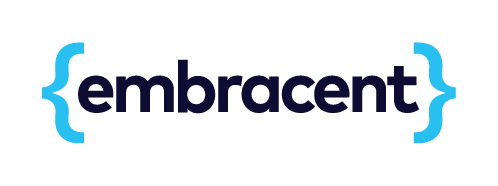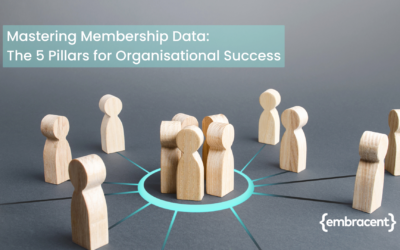In our previous articles we discussed how a new ERA of business is emerging, as we need to be more Efficient, Resilient and Agile in the future.
In this article, we discuss the second of those topics – Resilience.

Take responsibility
and hold themselves to account

Don’t complain
or blame others for the current situation

Are self-aware
and understand their strength and weaknesses

Accept limits
and adapt well to changing circumstances

Ask for help
and support when needed and where it is useful

Don’t compare
themselves to others

Are good humoured
and keep a sense of fun

Don’t overplan
recognising that the future is uncertain

Practice self-care
and manage their health and energy levels well
In her excellent TED talk, Angela Duckworth discussed the importance of Grit, and how this relates to resilience and success. Her research indicates that people who score highly on her Grit Scale do two things:

Have clear goals
for the long-term, that they stick to

Practice self-control
and don’t lose focus along the way
Whilst these points give a great insight into personal resilience, they do not fully relate to business resilience – even though they might give some food for thought. So, how do we apply this to a business?
The Resilient Business
In this recent report, McKinsey explain how they surveyed more than 1000 publicly traded companies in the last downturn and found that 10 percent fared materially better than the rest – they called them the “Resilients”.
They concluded that these Resilients did 3 things well:

Created financial flexibility
by aggressively reviewing and divesting areas of under-performance, these businesses created financial flexibility in the balance sheet to focus on high performing areas. They created financial headroom and agility to be able to invest wisely.
For example:
- Divesting underperforming business or removing low-margin products and services
- Reducing fixed overhead costs in favour of variable cost structures e.g. moving to Software As A Service (SAAS) models
- Re-financing the business to manage gearing ratios
- Changing financial write-down policies to reduce legacy technology investments that remain on the balance sheet

Reduced costs early
they tended to cut unnecessary costs and complexity early, and constantly ensure that the business was “lean and mean”. This created a culture of continuous improvement and also removed any complexity in the business that might slow or restrict agility.
For example:
- Creating high efficiency / low cost support functions and shared service centres for Finance, HR, IT
- Developing digital platforms that offer a fundamentally lower cost of delivery for core products and services
- Removing system and process complexity using automation
- Reducing the cost and complexity of legacy systems
- Reducing support and maintenance costs where not needed

Invested for growth
by having the financial flexibility and headroom created above, they were able to invest into growth areas early. Even when the overall market was still challenging, they were able to make strategic and opportunistic investments for the future.
For example:
- Investing in new products and services
- Purchasing or investing in businesses that are in growth areas
- Developing Digital platforms and Data Assets that can reshape markets
This is excellent advice, as you would expect from McKinsey, but it tends to be more relevant for very large businesses and, in this case, ignores the people component.
It is necessary to encourage resilience in both structures and people.
It also does not consider how we can use technology to improve business and structural resilience and remove single points of failure in organisation.
Technology Resilience
“Every company is now a technology company” – and this statement, made famous by this 2018 Wall Street journal article, has never been more true.
As we increasingly use technology to automate business processes, interact with customers and suppliers, and market our products and services, we have never been more reliant on technology.
However, this technology that we rely on day-to-day is not always as resilient as we would like it to be. It can often be reliant on a number of single points of failure – either in key technology components, or with manual processes interventions that someone needs to remember to action.
There are a number of ways in which our technology resilience can be improved, without costing a small fortune and taking many years to deploy:

Cloud first approach
hosting or deploying core applications on industry leading cloud environments from Microsoft, Google or Amazon Web Services (AWS)

Resilient Architecture
making sure that the overall architecture of systems, applications and infrastructure is fault-tolerant to sudden changes and designed with resilience and security in mind

Secure by design
making sure that security of information and data assets is considered at every stage of design, build and implementation. Retrospectively reviewing core architecture for any security weaknesses and concerns.

Automated Processes
making sure that when manual interventions are required in critical processes, they are well documented and understood, and automated if possible.

Managing Partner Performance
ensuring that third party products and services are understood and that the Service Level Agreements (SLAs) are clearly described and appropriate

Continuous Learning
creating feedback loops on actual versus predicted technology performance to identify any improvements. Conducting root cause analysis on incidents to continuously improve resilience.
Bringing these three aspects of resilience together, we have created a short practical list of things that we can do to become more resilient.
Our 7 key tips for improving resilience
By looking at both the business and personal components above, there are a number of ways in which we can materially affect resilience:

Set clear business resilience goals
making sure that the goals align with the overall values of the business and stand the test of time

Communicate them well
so that people buy into the journey – including a recognition that there will be challenges along the way

Create headroom
by restructuring the balance sheet, reducing costs and investing wisely for the future with resilient technologies

Agree Priorities and Plans
so that everyone understands how their day-to-day actions align with the overall direction of travel

Build for flexibility and mistakes
at a business, personal and technology level. Reassure people that there will be bumps along the way, and that’s OK.

Manage personal energy and enthusiasm
by allowing time for rest, recovery and fun
Create a support network
of people and partnerships that can help if needed
If you would like to know more about how to improve resilience in your organisation, please contact us for an initial discussion.
At embracent we provide world class technology advice in simple and pragmatic ways to mid-sized businesses across the world. We can help you embrace the opportunities that technology brings in the most cost-effective and sensible ways.

Mark Lockton Goddard
Other Interesting Reads
AI for Onboarding: A glimpse at the not-so-distant future for HR Directors
Artificial Intelligence (AI) has experienced a breakthrough year in 2023. But how we embrace AI and Machine Learning (ML) without losing sight of the bigger picture – and how we can be “better together” – is a conversation that we should all be having.
With that in mind, we invite you to see how AI has impacted Santa Clause this year in our short Christmas video.
embracent Christmas Video 2023
Artificial Intelligence (AI) has experienced a breakthrough year in 2023. But how we embrace AI and Machine Learning (ML) without losing sight of the bigger picture – and how we can be “better together” – is a conversation that we should all be having.
With that in mind, we invite you to see how AI has impacted Santa Clause this year in our short Christmas video.
Mastering Membership Data: The Five Pillars for Organisational Success
Explore how understanding members, aligning services, monitoring member activity, optimising internal operations, and tapping into external insights can revolutionise your organisation’s performance.



